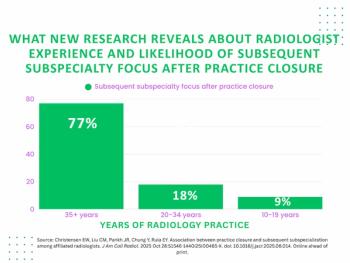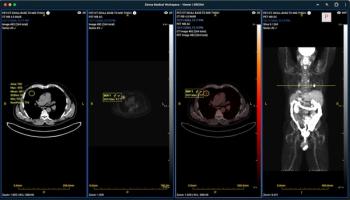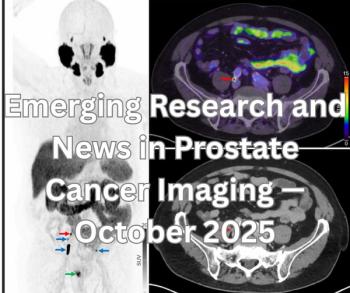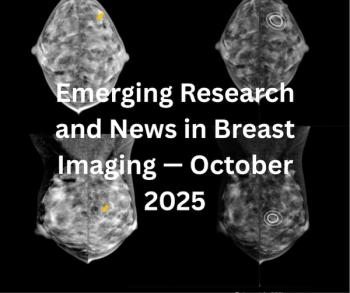
Survival Skills for Teleradiologists: How to Adapt and Soar in One's Career
A continued emphasis on sharpening skills, robust networking and living within one’s means are keys to navigating the ups and downs of the radiology job market.
In the past 11 years, I have spent a few editions of this blog likening certain members of the avian and radiological populations to one another. I think this might be the fifth. Each time, I have increasingly doubted I would find more feathered candidates.
A few days ago, however, a couple of bald eagles flew past the back of my house. This isn’t the first time we have had such a visit. A few years ago, while I was plugging away at my telerad work, the lady of the house looked out yonder to see an eagle actually standing in the yard. She called me over but by the time I got there, the critter had flown up to perch in a neighbor’s tree. It was still an impressive sight, just not as momentous.
The episode prompted us to get a “raptor shield” for the small pooch we had at the time. It was essentially a bit of body armor to protect against talons and the like. I recommend such gear for any readers with small outdoor pets in locations where birds of prey or coyotes might be found.
Bald eagles have made quite a comeback in our region during the past decade or so. We don’t exactly live in unspoiled nature here. We’re decidedly suburban with New York City less than an hour’s drive away in the absence of traffic. We have some wildlife but usually along the lines of rodents, small birds, etc. The eagles were a big (pleasant) surprise.
Perhaps folks who make it their business to know such things could have predicted it long beforehand, tracking eagle populations in nearby regions, changes in climate, etc. For most of us, however, the raptors might as well have sprung into spontaneous existence or flown through a wormhole. They weren’t here until conditions were favorable, at which point they suddenly were in abundance.
I see the dramatic upswing of teleradiology in recent years the same way. Telerads and the institutions that use telerad didn’t spring into existence from nothingness. Rather, conditions became favorable and telerad flourished as a result.
Some rads (and facilities needing them) might not even have thought of telerad for themselves until its viability was staring them in the face, changing their thinking from “Why would we ever do this,” to “Why wouldn’t we,” or even “Why haven’t we already been using telerad?” I’m sure the COVID-19 pandemic gave a big boost to that, but as I’ve written in other blogs, I think the trend has been heading in this direction for a long time.
(Editor’s note: For related content, see “
Favorable conditions wane as well as wax. In the long term, I don’t think the eagles are totally new to my area. They might well have been around a couple hundred years ago. The pesticide dichloro-diphenyl-trichloroethane (DDT) has been cited as one factor in their subsequent decline, but there are others. In the future, circumstances could arise that diminish the local population again.
Telerad hasn’t been around long enough to see many cycles of boom and bust, but that’s no reason to imagine that we are immune. A downturn in the job market would definitely put on some pressure. I can imagine, if times are tight for rads as a whole, that telerads might be disproportional targets for belt tightening.
My last telerad gig ultimately got scuttled because of a severe ransomware attack. The private rad group that had been trying to build its own tele subsection suddenly found itself unable to do anything remotely. It took them something like three months to restore even basic functionality, during which time most of us who needed to pay our bills had moved on. Just imagine if cyberterrorism become a bigger thing. Telemedicine as a whole would be a much easier target than traditional on-site health care.
Unless you happen to have a functioning crystal ball, looking into the future and knowing what to do to survive (or thrive) in changing conditions isn’t an option. You can make your best guesses and fortify your position so it’s less vulnerable to what comes down the pike. Probably the best preventive actions focus on general robustness rather than foresight.
While times are good, that includes living well within your means to build up reserves. Network well. Acquire and sharpen skills that will make you more capable, marketable, and versatile down the road. In our field, that includes finding a radiological gig that suits you and putting in roots as deep as you can, so you’re not blown away with the topsoil when the initial gusts of wind from the next tempest begin to blow.
Eagles aren’t doing such prepping, smart as they are. Evidently, however, they’ve been effective at adapting to fluctuating fortunes and recovering when storms pass. They roll with the punches, find safe havens from the worst of harsh times, and seize upon opportunities when they eventually resurface. Telerads who know how to cope with radiological “bear markets” as well as “bullish” times will ultimately soar as well.
Newsletter
Stay at the forefront of radiology with the Diagnostic Imaging newsletter, delivering the latest news, clinical insights, and imaging advancements for today’s radiologists.






























